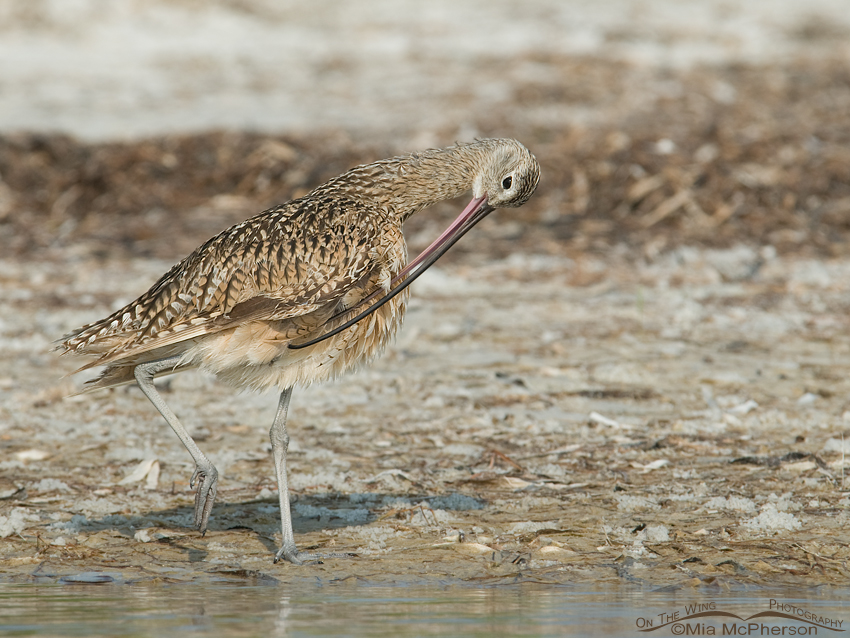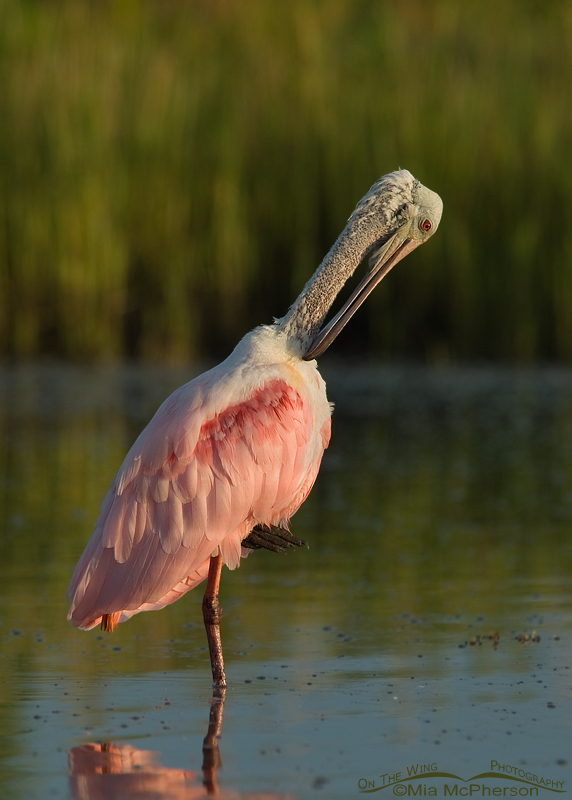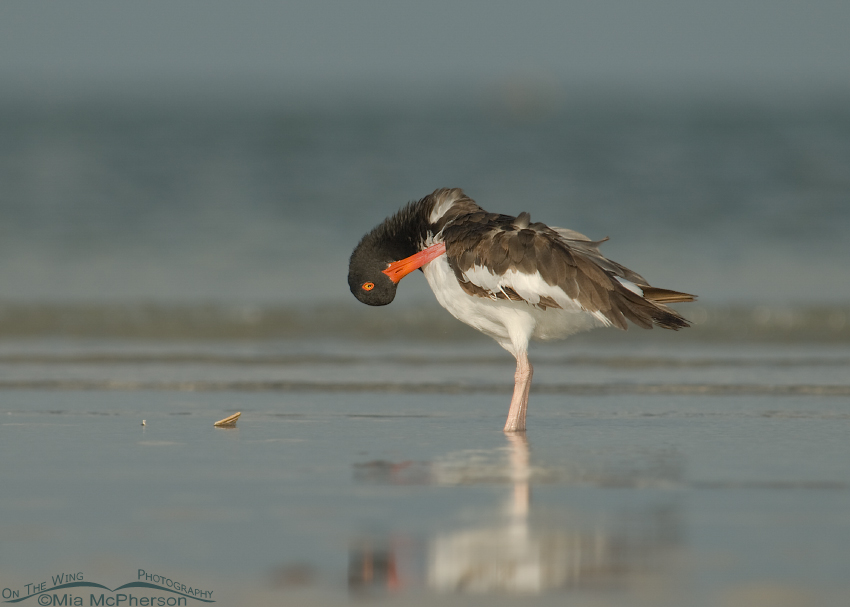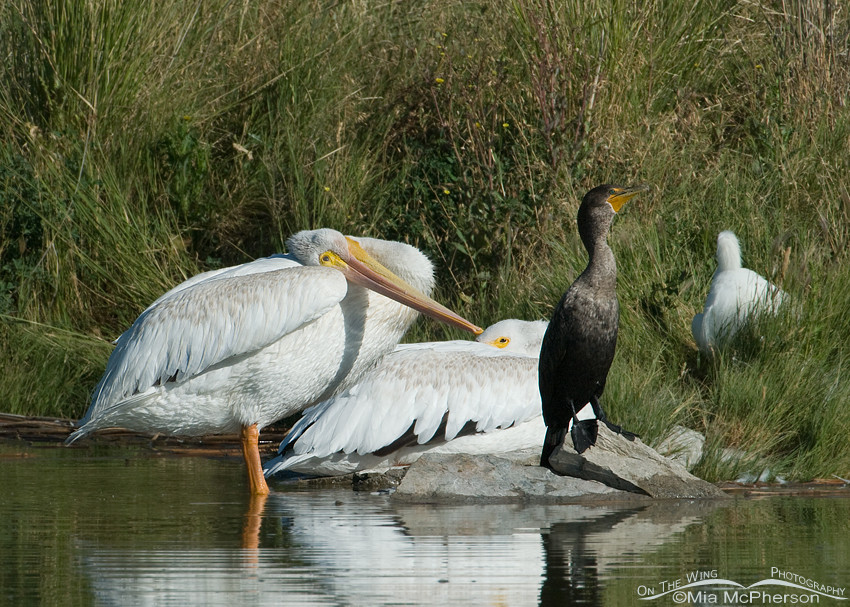 Long-billed Curlew preening
Long-billed Curlew preening
Preening in birds is essential for keeping their feathers clean, arranged correctly and for some birds it is a way to distribute oils from the uropygial gland which helps to keep the feathers clean and healthy. For some shorter billed birds the process looks relatively simple to me but for long billed birds preening seems a bit more difficult. Long-billed Curlews are easily able to access the uropygial gland and the feathers on the back of their bodies but are unable to reach some feathers near their head and neck because of the length of their bills. I have seen them preen the easily accessible feathers first then rub their heads and necks against the freshly preened feathers which seems like a way to distribute the oils from the uropygial gland to those hard to reach areas.
 Preening Roseate Spoonbill
Preening Roseate Spoonbill
For some long billed wading birds the preening process appears to also be a challenge. This Roseate Spoonbill image shows how about the closest that they can use their spatulate bills is where the long neck of the spoonbill meets its body. Like the Long-billed Curlew I have seen them rub their heads and necks over freshly preened body feathers to help distribute the oils.
 Preening American Oystercatcher
Preening American Oystercatcher
American Oystercatchers have relatively long bills but to me they appear to have fewer challenges preening than the Roseate Spoonbills and Long-billed Curlews.
 American White Pelican preening
American White Pelican preening
American White and Brown Pelicans have long necks and bills and the oils from uropygial gland are especially important because the pelicans are in and on the water often and the oils help to keep their feathers dry and buoyant. This American White Pelican image shows the pelican rubbing its neck and head against the other freshly preened feathers to distribute the oils much the same way as Long-billed Curlews, Roseate Spoonbills, American Oystercatchers and other long billed birds use.
These birds also use their feet to scratch and that may help distribute oils and remove debris from the feathers they can’t reach with their bills. I haven’t observed the birds I have posted here preening each other but do know that some species like Common Ravens do.
Birds are amazing…
Mia
Click here to see more of my bird photos.





Very interesting article! I’ve always been fascinated watching the longer-billed birds preening techniques.
“Birds are amazing.” Amen, Mia!
wow .. that can’t be easy!!!!
Birds are INCREDIBLE. And beautiful.
I’ve wondered about this myself, so it’s interesting to read your text and see the apt and lovely illustrations.
Gorgeous photos
An interesting series…I always enjoy the captures of behaviors like these…lovely composition in all four, but especially the last….
Great post Mia! I love to see a discussion on behavior that considers multi species. AND the Long-billed Curlew photo is exceptional.
Interesting post on this beautiful day. I noticed the Roseate Spoonbill makes it easier by not having much in the way of feathers on its neck.
They sure are! Birds are awesome!